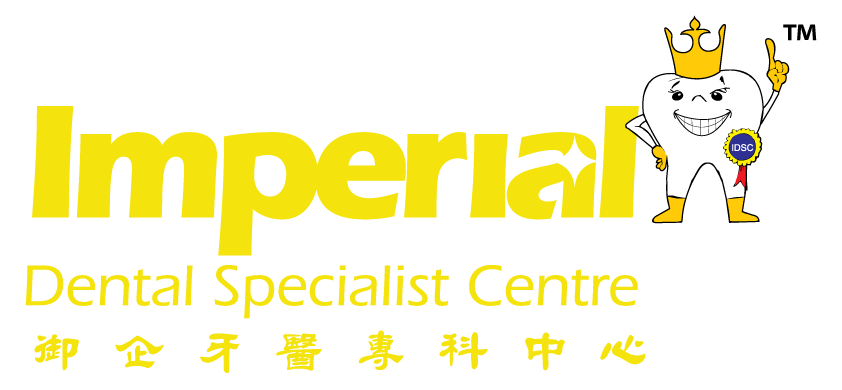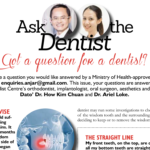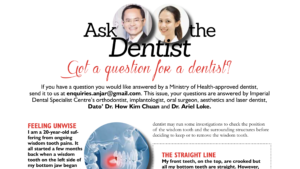Correction of Class I Malocclusion (+ Anterior Open Bite) with Clear Aligners
by Dato’ Dr. How Kim Chuan and Dr. Ashwini Kholgade


Introduction
Metal braces are one of several ways to fix misaligned teeth. However, they are highly visible, which patients do not really like. Clear (invisible) aligners such as Invisalign are the newest form of orthodontic treatment devices today. Invisalign treatment involves the use of specially manufactured clear sets of removable aligners that are custom-fi tted and replaced incrementally and frequently (often weekly).
Dental impressions are scanned in order to create a digital 3D representation of the teeth. A computer graphic representation of the projected tooth movements is created through the ClinCheck software programme. The aligners are modelled using CAD/CAM software and manufactured using a rapid prototyping technique called stereolithography. The moulds for the aligners are built in layers using a photo-sensitive liquid resin that cures into a hard plastic when exposed to laser.
Clear aligners are made from an elastic thermoplastic material that applies pressure to the teeth to move them into the aligner’s position. These can be easily worn and removed by the patient and are highly aesthetic due to the lack of visible elements. They are typically indicated for mild to moderate crowding and/or spacing (1 to 6mm), provided there are no discrepancies in the jawbone.
Clear aligner therapy is not applicable for the treatment of severe
malocclusion.
Case report
A 33-year-old female patient presented to the offi ce for orthodontic consultation with a chief complaint of misaligned teeth.


Clinical examination revealed the following:
• Convex facial profi le with competent lips. The facial midline coincides with the upper midline, but the upper and lower dental midlines do not coincide with each other – lower midline falls 1mm to the left in relation to the upper (Fig. 1a).
coincides with the upper midline, but the upper and lower dental midlines do not coincide with each other – lower midline falls 1mm to the left in relation to the upper (Fig. 1a).
• Instanding tooth #22
• Open bite (1.5mm), anterior right side (Fig. 1b).
Pre-treatment lateral cephalometric analysis revealed the following:
• Class I skeletal relationship of maxilla and mandible (ANB 2.95°)
• Bimaxillary prognathism and proclined maxillary anteriors (Uinc 124.42°)
• Interincisal angle was less (95°), revealing protrusion
• Maxillary mandibular plane angle was 30° (Fig. 2, Table 1).
A diagnostic cast set-up was done. Impressions were taken using polyvinyl siloxane impression material with bite registration. The computer-generated ClinCheck set-up showing the type and placement of attachments was reviewed, modifi ed and accepted (Fig. 3).


Treatment objectives
• Correction of the anterior open bite, establishment of ideal overjet and overbite by retracting and tipping the maxillary and mandibular incisors lingually.
• Correction of the discrepancy between facial and dental midlines.
• Correction of the instanding tooth #22.
Treatment progress
The treatment objectives were explained to the patient and informed consent was obtained. At the onset of treatment, the second premolars from all quadrants were extracted and attachments were fitted on all 3s, 4s, 6s and 7s for placement of aligners (Fig. 4). Four to six aligner sets were delivered to the patient, which should be worn for 20 to 22hrs per day and removed only for eating, drinking and tooth brushing or flossing.
The patient was seen after every eight weeks to check for aligner fi t, attachment stability and cooperation. After the 12th aligner, open bite correction has been observed on the anterior right side. The upper left canine has shifted distally and the left lateral incisor moved bucally; however, it was still in cross bite (Fig. 5).
Unfortunately, the attachment on tooth #37 debonded in the middle of treatment. Upon discovering, we elected to rebond the attachment and continue treatment with the current aligner. After 34 aligners, tooth #s 36 and 37 were slightly off track.
 Refinement was done by removing the attachment. Upper and lower impressions were obtained using polyvinyl siloxane (PVS). As treatment progressed, the upper and lower midlines coincided, and the spaces between premolars and molars in all quadrants were reduced along with the buccal movement of tooth #22 (Fig. 6). Refinement aligners were given to the patient and she was recalled after one to two weeks to fit attachments. Labial root torques for tooth #s 12 and 22 were added for bodily movement.
Refinement was done by removing the attachment. Upper and lower impressions were obtained using polyvinyl siloxane (PVS). As treatment progressed, the upper and lower midlines coincided, and the spaces between premolars and molars in all quadrants were reduced along with the buccal movement of tooth #22 (Fig. 6). Refinement aligners were given to the patient and she was recalled after one to two weeks to fit attachments. Labial root torques for tooth #s 12 and 22 were added for bodily movement.
The next 19 aligners were provided for the rest of the treatment. During this phase, the patient was reviewed every eight weeks. Posterior open bite developed midway of treatment but this was rectified by the refinement aligners. The open bite on the anterior right side was corrected. The patient completed wearing all aligners. Composite buttons were placed on all 4s, 6s, and 7s and settling elastics were given. She was reviewed after a week for debonding of attachments. Treatment was finally concluded using 53 aligners. For retention, Tru-Tain retainers were given to the patient, which were eventually replaced by Vivera retainers after
five weeks.
Results
The final results showed good alignment and bilateral Class I molar and canine relationships. Tooth #22 in cross bite was corrected. The anterior open bite was completely corrected by sufficient retraction of the upper and lower incisors, thus achieving the ideal overjet and overbite (Fig. 7a & b). The facial midline coincided with the dental midline.
Proper occlusion and balanced facial profile were maintained after retention (Fig. 8 & 9). Excellent patient compliance contributed significantly to the success of this case.




Discussion
It is important to compare the clinical positions of the teeth with the ClinCheck images every six to ten aligners. If the comparison is not within 10 per cent variance, treatment should be stopped at that point to determine what must be done to get on track. This might mean going back to an aligner that fi ts and then repeating the succeeding ones.
Invisalign has been proven effective and can be used to “treat a vast majority of adults and adolescents”, giving the impression that most orthodontic cases can now benefit from this technology. However, caution should be taken when dealing with the following:
• Malocclusions that have more than 5mm of spacing and crowding
• Antero-posterior skeletal discrepancies greater than 2mm
• Centric relation and occlusion discrepancies
• Rotation greater than 20 degrees
• Anterior and posterior open bites
• Extrusion
• Tipping greater than 45 degrees
• Teeth with short clinical crowns and arches missing multiple teeth
Root parallelism is maintained for bodily movement of teeth during space closure. Aligner activation is engineered to eliminate both unwanted tipping and anterior extrusion during retraction. Treatment
must be carried out before G6 development in extraction cases.
Conclusion
In this case report, a combination of extraction (second premolars) and the use of clear aligners proved to be effective modalities in treating malocclusion. The patient had an open bite due to proclination of maxillary incisors. This was addressed through adequate retraction of maxillary and mandibular anteriors using Invisalign, which contributed to the successful restoration of the ideal overjet and overbite.

References
1. http://invisalign.com.au/
2. http://identityortho.com/wp-content/uploads/2015 /05/invisalign-effectiveness.pdf








